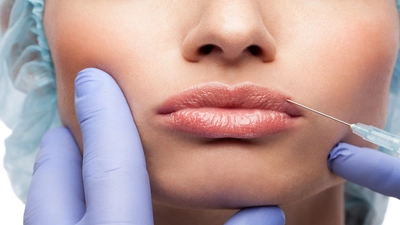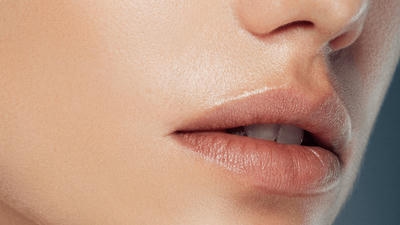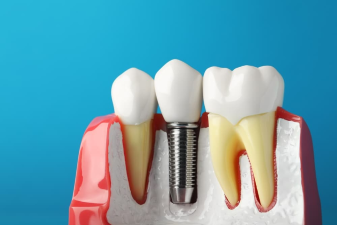The pursuit of aesthetic enhancements has surged in popularity over the past decade, with lip fillers being one of the most sought-after procedures. These cosmetic treatments, designed to enhance the fullness and shape of the lips, have garnered attention not only from the beauty community but also from dental professionals. As more individuals consider lip fillers, questions surrounding their impact on oral health arise.

Understanding Lip Fillers
What Are Lip Fillers?
Lip fillers typically consist of hyaluronic acid, a naturally occurring substance in the body that helps retain moisture and volume. These fillers are injected into the lips to achieve a plumper appearance, correct asymmetry, or enhance lip contours. The procedure is minimally invasive and can be done quickly in a clinician's office, resulting in immediate results.
Types of Lip Fillers
-
Hyaluronic Acid Fillers: The most commonly used type, these fillers are safe, effective, and reversible. Examples include Juvederm and Restylane.
-
Collagen Fillers: Less commonly used today, collagen fillers can enhance the lips but may come with a higher risk of allergic reactions.
-
Fat Transfer: Involves harvesting fat from another part of the body and injecting it into the lips. While this provides longer-lasting results, it is a more invasive procedure.
-
Permanent Fillers: These fillers are designed to last significantly longer than hyaluronic acid but can carry more risks, including complications and the potential for migration.
The Procedure
The lip filler procedure typically includes the following steps:
-
Consultation: A thorough consultation with a qualified injector is crucial. The practitioner will assess the patient's goals, medical history, and previous cosmetic procedures.
-
Preparation: Before the procedure, the lips may be numbed with a topical anesthetic to minimize discomfort during injections.
-
Injection: The filler is carefully injected into targeted areas of the lips. The injector may use a fine needle or cannula, depending on the technique.
-
Post-Care: After the procedure, patients may experience mild swelling or bruising, which typically resolves within a few days.
Results and Longevity
The results of lip fillers can last from six months to a year, depending on the type of filler used, the individual's metabolism, and the area treated. Regular touch-ups are necessary to maintain the desired fullness.
The Connection Between Lip Fillers and Oral Health
As lip fillers become more widely accepted, it is essential to consider their impact on oral health. Many individuals may be unaware of the potential risks and considerations that come with these cosmetic procedures. Dentists emphasize a few key areas of concern regarding lip fillers and their effects on oral health.
1. Potential for Infection
Any invasive procedure carries the risk of infection, and lip fillers are no exception. Bacteria can enter through the injection site, leading to complications. Dentists advise patients to:
- Ensure the procedure is done in a clean, sterile environment by a licensed professional.
- Follow post-procedure care instructions, such as avoiding excessive touching or manipulation of the lips.
2. Blood Flow and Lip Enhancement
Hyaluronic acid fillers work by attracting water to the treated area and enhancing the volume of the lips. However, the increased blood flow and swelling post-injection can lead to temporary changes in the oral environment. Dentists recommend:
- Paying attention to any changes in sensation or comfort levels, especially when it comes to oral hygiene practices.
- Maintaining good oral hygiene during the healing period to avoid complications.
3. Impacts on Oral Hygiene
The presence of fillers in the lips may affect how individuals maintain their oral hygiene practices. Dentists highlight the following aspects:
- Brushing and Flossing: After lip filler treatment, some patients may experience tenderness or sensitivity. It is essential to continue brushing and flossing gently to maintain oral health.
- Mouth Rinsing: Individuals should be cautious about using mouthwash or oral rinses that may contain alcohol or strong agents that could irritate the lips or injection sites.
4. Altered Sensation
While many patients enjoy the enhanced appearance of their lips, some may also notice changes in lip sensation after fillers. This altered sensation can affect how individuals perceive warmth, cold, or pressure when eating or drinking. Dentists recommend:
- Being mindful of food temperatures to avoid discomfort.
- Taking extra care when consuming hot or spicy foods that may irritate the lips.
5. Effects on Lip Movement
The introduction of fillers may impact how the lips move during speech and facial expressions. Dentists emphasize the importance of:
- Communicating with the injector about desired outcomes to maintain natural lip movement while enhancing fullness.
- Practicing speaking and smiling post-treatment to assess any changes in lip mobility.
6. Complications and Adverse Effects
Though rare, some complications can arise from lip filler treatments. Dentists warn about potential risks, including:
- Lumpiness or Irregularities: If the filler is not evenly distributed, it can create lumps or uneven areas.
- Allergic Reactions: Though uncommon with hyaluronic acid, some individuals may experience allergic reactions to certain fillers.
- Vascular Complications: In more severe cases, filler injections can obstruct blood vessels, leading to tissue necrosis. Immediate medical attention may be required in such cases.

Choosing a Qualified Professional
Given the potential risks associated with lip fillers, it is crucial for patients to choose a qualified and experienced provider. Dentists suggest the following when considering lip fillers:
1. Research Providers
Investigate the credentials and experience of the injector. Look for reviews and before-and-after photos to assess their work.
2. Consult a Dental Professional
Before undergoing lip augmentation, consider consulting a dentist or qualified healthcare provider who understands the anatomy of the lips and their relationship to oral health.
3. Discuss Goals and Concerns
Effective communication with the injector is vital. Discuss desired outcomes, potential risks, and any concerns regarding oral health.
4. Verify Hygiene Standards
Ensure that the provider follows strict hygiene and safety protocols in their practice to minimize infection risk.
Post-Treatment Care for Lip Fillers
After receiving lip fillers, patients should adhere to specific post-treatment care instructions to promote healing and minimize complications. Dentists advise:
1. Avoiding Touching the Lips
Refraining from touching or massaging the lips immediately after the procedure can prevent irritation and infection.
2. Managing Swelling
Applying a cold compress gently to the lips can help reduce swelling and discomfort. Patients should avoid hot foods and strenuous activities for the first few days.
3. Maintaining Oral Hygiene
It is crucial to continue brushing and flossing every day, albeit gently. Patients may choose to use a soft-bristled toothbrush and mild toothpaste to avoid irritation.
4. Staying Hydrated
Drinking plenty of water can help maintain moisture levels and support healing.
5. Limiting Certain Activities
Patients should avoid activities that could affect the filler, such as intense facial expressions, aggressive sports, or dental procedures shortly after treatment.
The Psychological Impact of Lip Fillers
In addition to the physical aspects, lip fillers also carry psychological implications. Many individuals seek fillers to enhance their confidence and self-image, believing that a fuller pout will boost their attractiveness. Dentists emphasize the importance of:
1. Realistic Expectations
Setting realistic expectations before treatment is essential to ensure satisfaction with the results. While fillers can enhance appearance, they cannot solve underlying self-esteem issues.
2. Psychological Preparedness
Understanding the reasons behind seeking cosmetic procedures can help individuals make more informed decisions. Consider speaking with a counselor or therapist if uncertainty exists regarding motivations for enhancement.
3. Emotional Well-being Post-Treatment
After undergoing the procedure, individuals may experience a range of emotions, from joy and satisfaction to disappointment or regret. It is crucial to recognize and process these feelings during the healing period.
Conclusion
As the popularity of lip fillers continues to rise, understanding their implications for oral health is essential for individuals considering this cosmetic enhancement. While lip fillers can enhance appearance and boost self-esteem, they come with potential risks related to oral health that should not be overlooked.
By prioritizing consultation with qualified professionals, maintaining proper oral hygiene, and adhering to post-treatment care guidelines, patients can enjoy the benefits of lip fillers while protecting their oral health. Ultimately, knowledge and awareness are key to making informed decisions about cosmetic procedures and ensuring a positive experience.



